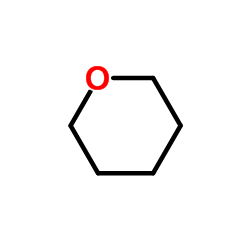Contribution of postsynaptic T-type calcium channels to parallel fibre-Purkinje cell synaptic responses.
Romain Ly, Guy Bouvier, German Szapiro, Haydn M Prosser, Andrew D Randall, Masanobu Kano, Kenji Sakimura, Philippe Isope, Boris Barbour, Anne Feltz
文献索引:J. Physiol. 594 , 915-36, (2016)
全文:HTML全文
摘要
At the parallel fibre-Purkinje cell glutamatergic synapse, little or no Ca(2+) entry takes place through postsynaptic neurotransmitter receptors, although postsynaptic calcium increases are clearly involved in the synaptic plasticity. Postsynaptic voltage-gated Ca(2+) channels therefore constitute the sole rapid postsynaptic Ca(2+) signalling mechanism, making it essential to understand how they contribute to the synaptic signalling. Using a selective T-type calcium channel antagonist, we describe a T-type component of the EPSC that is activated by the AMPA receptor-mediated depolarization of the spine and thus will contribute to the local calcium dynamics. This component can amount up to 20% of the EPSC, and this fraction is maintained even at the high frequencies sometimes encountered in sensory processing. Modelling based on our biophysical characterization of T-type calcium channels in Purkinje cells suggests that the brief spine EPSCs cause the activated T-type channels to deactivate rather than inactivate, enabling repetitive activation.In the cerebellum, sensory information is conveyed to Purkinje cells (PC) via the granule cell/parallel fibre (PF) pathway. Plasticity at the PF-PC synapse is considered to be a mechanism of information storage in motor learning. The induction of synaptic plasticity in the cerebellum and elsewhere usually involves intracellular Ca(2+) signals. Unusually, postsynaptic Ca(2+) signalling in PF-PC spines does not involve ionotropic glutamatergic receptors because postsynaptic NMDA receptors are absent and the AMPA receptors are Ca(2+) -impermeable; postsynaptic voltage-gated Ca(2+) channels therefore constitute the sole rapid Ca(2+) signalling mechanism. Low-threshold activated T-type calcium channels are present at the synapse, although their contribution to PF-PC synaptic responses is unknown. Taking advantage of 3,5-dichloro-N-[1-(2,2-dimethyl-tetrahydro-pyran-4-ylmethyl)-4-fluoro-piperidin-4-ylmethyl]-benzamide, a selective T-type channel antagonist, we show in the mouse that inhibition of these channels reduces PF-PC excitatory postsynaptic currents and excitatory postsynaptic potentials by 15-20%. This contribution was preserved during sparse input and repetitive activity. We characterized the biophysical properties of native T-type channels in young animals and modelled their activation during simulated dendritic excitatory postsynaptic potential waveforms. The comparison of modelled and observed synaptic responses suggests that T-type channels only activate in spines that are strongly depolarized by their synaptic input, a process requiring a high spine neck resistance. This brief and local activation ensures that T-type channels rapidly deactivate, thereby limiting inactivation during repetitive synaptic activity. T-type channels are therefore ideally situated to provide synaptic Ca(2+) entry at PF-PC spines.© 2015 The Authors. The Journal of Physiology © 2015 The Physiological Society.
相关化合物
| 结构式 | 名称/CAS号 | 分子式 | 全部文献 |
|---|---|---|---|
 |
四氢吡喃
CAS:142-68-7 |
C5H10O |
|
Structurally and stereochemically diverse tetrahydropyran sy...
2010-04-12 [Angew. Chem. Int. Ed. Engl. 49(17) , 3069-72, (2010)] |
|
A SURGICAL APPROACH TO LARGE SUBRETINAL HEMORRHAGE USING PAR...
2015-08-01 [Retina (Philadelphia, Pa.) 35 , 1631-9, (2015)] |
|
Long-term heavy silicone oil intraocular tamponade.
2016-02-01 [Int. Ophthalmol. 36 , 07-Mar, (2016)] |
|
Is bond stretch isomerism in mononuclear transition metal co...
2015-07-28 [Dalton Trans. 44 , 12653-9, (2015)] |
|
An iodine catalyzed metal free domino process for the stereo...
2015-06-28 [Org. Biomol. Chem. 13 , 6737-41, (2015)] |